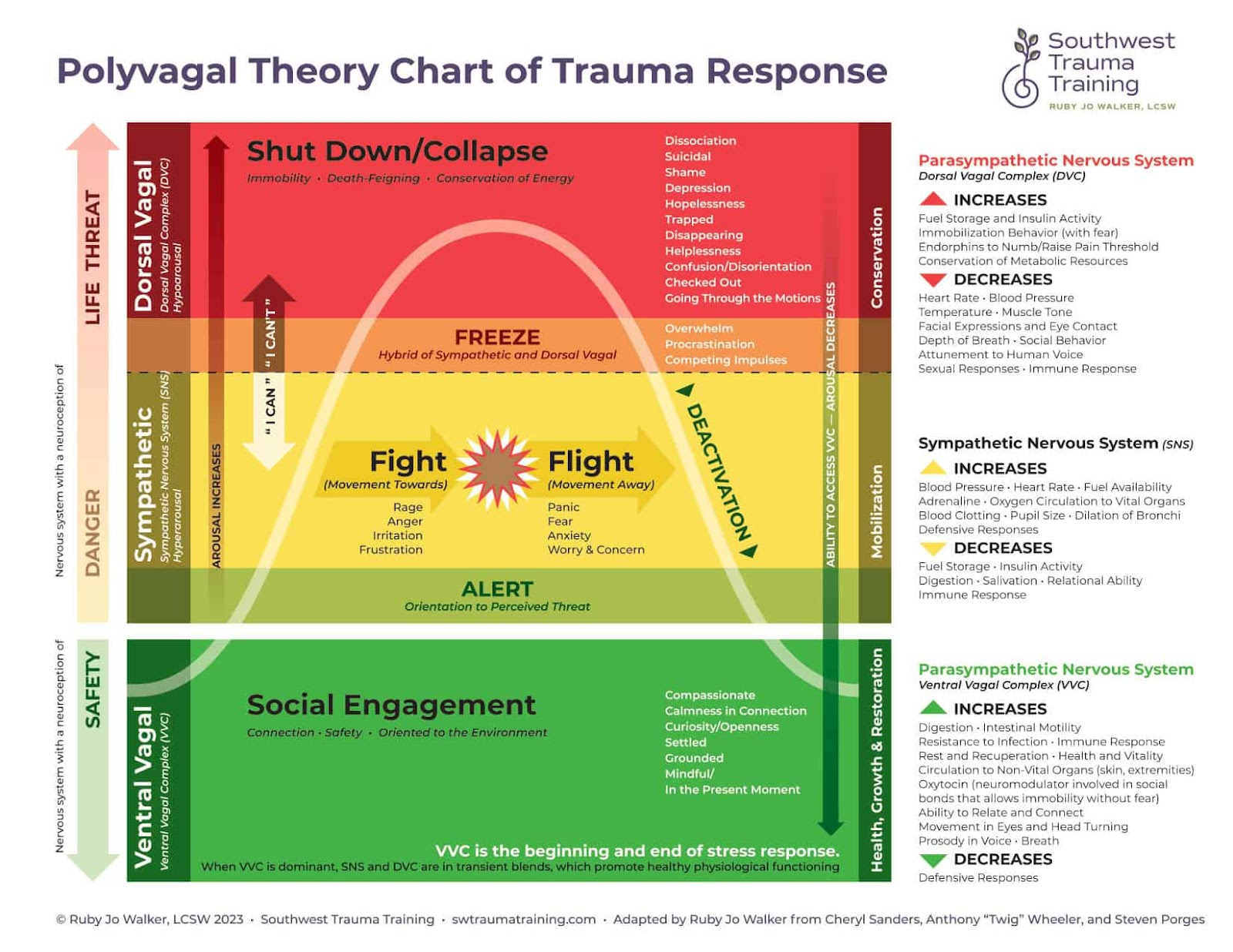
(poly- "many" + vagal "wandering")
- polyvagal ladder
Sympathetic activation
This part of our nervous system enables daily movement as well as the fight/flight stress responses. If you are alive there is always some level of sympathetic activation happening. Low levels are used for waking, sitting, standing, while high levels allow us to run, exert a lot of energy, or express big feelings.
Parasympathetic activation
Ventral Vagus
A nerve circuit which enables our social-engagement-system to function. The social engagement system is how we are able to connect with self, others, nature, and higher states of consciousness.
Dorsal Vagus
A nerve circuit which has two roles, depending on its neural tone.
At low-tone , the dorsal vagus is how we “rest and digest,” sleep, rebuild/repair, meditate, and slow down for intimacy.
At high tone , the dorsal vagus shuts off all nonessential body processes to protect us from a life threat.
Notes
- According to Porges, there are actually three branches to the automonic nervous system, and they developed at different periods in human evolution. there’s a newer, sleeker social engagement system, an older action system (sympathetic) and an even older still shut-down system (parasympathetic). The sympathetic system is that which drives us to action, and, when there’s a threat, it triggers the adrenaline response which puts us into fight or flight. When this response is even overwhelmed by the threat level, or if action (fight or flight) isn’t possible, then the older dorsal vagal response kicks in, and we freeze: shut down, tune out the world, go into a deep disassociative freeze state. rebecca-altman
books
- Nurturing Resilience by Nathy Kain and Stephen Terrell
Sources
- https://en.wikipedia.org/wiki/Polyvagal_theory
- https://www.facebook.com/TraumaGeek/posts/3605536236149225
- https://www.researchgate.net/post/After-20-years-of-polyvagal-hypotheses-is-there-any-direct-evidence-for-the-first-3-premises-that-form-the-foundation-of-the-polyvagal-conjectures
- The Polyvagal Theory. Explained. tags.to-watch
- The Polyvagal Theory Explained #nervoussystem #traumahealing] #to-watch
- How to Map Your Own Nervous Sytem: The Polyvagal Theory - The Movement Paradigm